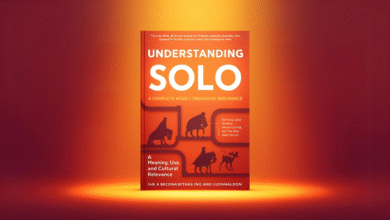Hindu (хінду): Religion, Culture, and a Way of Life that Shaped the World

The word хінду is often used to describe people who follow Hinduism. But in reality, it means much more than a religious label. Being Hindu often refers to an entire way of life that blends faith, culture, philosophy, and tradition. To many Westerners or Ukrainians (since “хінду” is the Ukrainian word for Hindu), it might seem distant or exotic. Yet, if you look closely, you’ll see that ideas rooted in Hindu culture—like yoga, meditation, karma, and mindfulness—have deeply influenced the modern world.
I first encountered Hindu culture back in university. A friend invited me to a meditation class, and it wasn’t just a physical practice—it opened up an entirely new perspective on life. That day I learned about concepts like dharma and karma, and I realized this tradition was far richer than I imagined. Since then, I’ve read books, attended lectures, and even visited Hindu temples. What struck me most is that Hinduism is not just a religion—it’s a living philosophy that affects everything from art and music to how people see their role in the world.
In this article, I’ll guide you through the history, beliefs, traditions, and modern presence of Hindu culture in a simple, approachable way. I’ll also share some personal reflections along the way to make it more relatable.
Origins of Hinduism and Its Historical Path
Hinduism is one of the oldest living religions in the world. Its roots go back more than 3,000 years BCE, to the Indus Valley Civilization. In fact, the word Hindu comes from the name of the Indus River. Early Persians and Arabs referred to the people living beyond that river as “Hindus.”
Unlike Christianity, Islam, or Buddhism, Hinduism has no single founder and no single starting date. Instead, it developed gradually, gathering wisdom, rituals, and traditions over thousands of years. The earliest and most sacred texts are the Vedas, collections of hymns and prayers that were passed down orally before being written. Over time, other important works appeared, such as the Upanishads, the Bhagavad Gita, the Ramayana, and the Mahabharata.
What makes Hinduism unique is its flexibility. It’s not a fixed set of dogmas but a vast umbrella that embraces many schools of thought, deities, and practices. This adaptability has allowed Hinduism to survive and thrive for thousands of years.
Core Beliefs and Spiritual Principles
It’s hard to summarize Hinduism in a few rules because it’s more of a worldview than a strict doctrine. Still, several key concepts are central to Hindu thought:
-
Dharma – one’s moral duty and righteous path in life.
-
Karma – the law of cause and effect, where every action shapes future outcomes.
-
Reincarnation – the belief that the soul is reborn into new lives after death.
-
Moksha – liberation from the cycle of rebirth and ultimate union with the divine.
These principles shape how Hindus view life and death. Life is not seen as an ending, but as part of a larger cycle of growth and transformation.
Personally, I’ve always been fascinated by the idea of karma. When I first started reflecting on it, I became more aware of how my small actions—kindness, honesty, patience—could ripple outward. Even if you don’t fully subscribe to the idea of cosmic justice, living as if your actions matter makes life more meaningful.
Read Also: Los Altísimos by Hugo Correa: Summary, Themes, and Legacy of a Chilean Dystopia
Gods and Divine Forces in Hinduism
Hinduism is often described as polytheistic because it has thousands of gods. But many Hindus believe these deities are simply different aspects of one supreme reality, known as Brahman.
Some of the most important gods include:
-
Brahma – the creator of the universe.
-
Vishnu – the preserver and protector, often worshipped in forms like Krishna or Rama.
-
Shiva – the destroyer and regenerator, a symbol of transformation.
-
Durga and Kali – fierce goddesses who embody strength and protection.
-
Lakshmi – the goddess of wealth and prosperity.
-
Ganesha – the elephant-headed god of wisdom and success, widely beloved even outside India.
When I visited a Hindu temple for the first time in India, I was struck by the explosion of colors, sounds, and scents. Worship in Hinduism is not silent or restrained—it’s alive with music, chanting, flowers, incense, and offerings of food. The experience made me realize that spirituality doesn’t have to be solemn; it can be vibrant and joyful.
Sacred Texts and Philosophy
The Vedas are the oldest and most authoritative scriptures in Hinduism. They contain hymns, rituals, and philosophical reflections. Later, the Upanishads explored deeper questions about the soul and the universe.
Two great epics, the Ramayana and the Mahabharata, have shaped Hindu culture profoundly. They tell stories of divine heroes who struggle with duty, morality, and destiny. Within the Mahabharata lies the Bhagavad Gita, a dialogue between Krishna and the warrior Arjuna, where Krishna explains the meaning of duty, devotion, and detachment.
I once read the Bhagavad Gita in translation, and although it was challenging, it left a deep impression on me. Arjuna’s hesitation on the battlefield felt strangely modern—like the doubts we all face when we have to make tough choices. Krishna’s words about staying true to one’s purpose resonated with me at a time when I was uncertain about my own career path.
Yoga, Meditation, and Spiritual Practices
If there’s one Hindu practice that has gone global, it’s yoga. But what many people don’t realize is that yoga is much more than physical exercise. In Hindu philosophy, yoga means “union,” and it’s about connecting body, mind, and spirit.
There are several paths of yoga:
-
Hatha yoga – the physical practice familiar to most people today.
-
Raja yoga – focused on meditation and self-discipline.
-
Bhakti yoga – devotion to a personal god.
-
Karma yoga – selfless service and action.
Meditation is also central. When I first started meditating, I struggled to sit still for even five minutes. But over time, I noticed how it quieted my mind and gave me clarity. It wasn’t mystical—it was simply the practice of paying attention to my breath and observing my thoughts. That small daily habit has helped me manage stress and feel more centered.
Hindu Traditions and Festivals
Hindu culture is rich with festivals, each filled with symbolism and joy.
-
Diwali – the festival of lights, celebrating the triumph of good over evil.
-
Holi – the festival of colors, where people throw colored powders in the air.
-
Navratri – nine nights of worship for the goddess Durga.
-
Raksha Bandhan – a festival honoring the bond between brothers and sisters.
I once joined a Holi celebration with friends, and it was unforgettable. The air was filled with laughter and bright clouds of color. For a moment, everyone was equal—covered in red, blue, and green. It wasn’t just fun; it felt like a living reminder that life can be playful and beautiful.
The Caste System and Modern Perspectives
One of the most controversial aspects of Hindu society is the caste system. Traditionally, society was divided into four classes:
-
Brahmins – priests and teachers.
-
Kshatriyas – warriors and rulers.
-
Vaishyas – merchants and farmers.
-
Shudras – laborers and service workers.
Although the caste system has been officially abolished in India, its influence remains. Many modern Hindus openly criticize caste discrimination and advocate for equality. Like many ancient traditions, it continues to evolve in the modern world.
Hindu Culture: Art, Dress, and Food
Hindu culture goes beyond religion—it expresses itself through art, fashion, and cuisine.
-
Art and Dance: Classical dance forms like Bharatanatyam and Kathak tell stories from Hindu epics. Music often uses instruments like the sitar and tabla.
-
Dress: Women often wear sarees, while men may wear dhotis or kurtas. Even today, these garments appear at festivals and weddings.
-
Food: Hindu cuisine emphasizes vegetarianism, spices, and balance. Popular dishes include dal (lentils), curry, dosa, and chutney.
I’m personally a fan of Indian food. I once tried masala dosa in a small Indian restaurant, and it was so delicious that I spent days trying to recreate it at home. I didn’t get it quite right, but it gave me a new respect for the artistry of Hindu cooking.
Hinduism in the Modern World and in Ukraine
Today, Hinduism is not confined to India. Its influence is global. Yoga studios can be found in almost every city, meditation is used by psychologists and wellness experts, and the concept of karma has entered everyday speech.
In Ukraine and other parts of Europe, there are Hindu cultural centers and communities. They host festivals, lectures, and meditation sessions, giving people a chance to explore this tradition without traveling across the world.
My Personal Journey with Hindu Culture
For me, Hinduism started with yoga but quickly grew into something more. What I admire most is its holistic approach to life. It doesn’t separate the sacred from the everyday. Cooking, studying, working, even walking—all of it can be part of a spiritual path if done with awareness.
What also inspires me is Hinduism’s openness. Unlike some religions that demand absolute belief, Hinduism encourages exploration. It allows room for doubt, curiosity, and personal discovery. That makes it not just a faith, but a philosophy of life.
Conclusion: Why Hindu Culture Matters Today
Hinduism is not just a religion. It is a way of thinking, living, and relating to the world. Its core principles—karma, dharma, meditation, yoga—have become universal tools for personal growth.
In a time when many people are searching for meaning, balance, and connection, Hindu culture offers insights that feel timeless and practical. It teaches us to live consciously, to respect others, and to see life as a journey toward something greater.
FAQ
1. What is the difference between “Hindu” and “Hinduism”?
A Hindu is a person who follows Hinduism, while Hinduism is the religion and philosophy itself.
2. Who are the main gods in Hinduism?
Vishnu, Shiva, Brahma, Ganesha, Lakshmi, and Durga are among the most important.
3. Is Hinduism polytheistic?
It appears polytheistic, but many Hindus see all gods as expressions of one supreme reality.
4. What are the biggest Hindu festivals?
Diwali, Holi, Navratri, and Raksha Bandhan.
5. Is Hinduism practiced in Ukraine?
Yes, there are Hindu cultural centers and communities across Ukraine and Europe.



